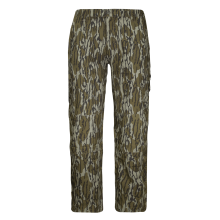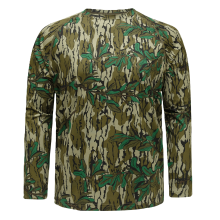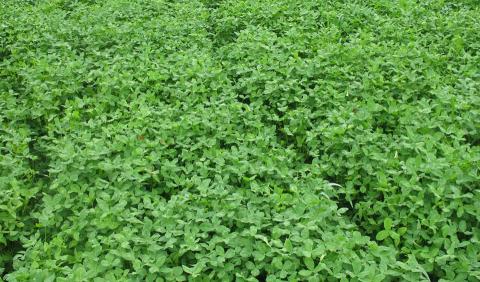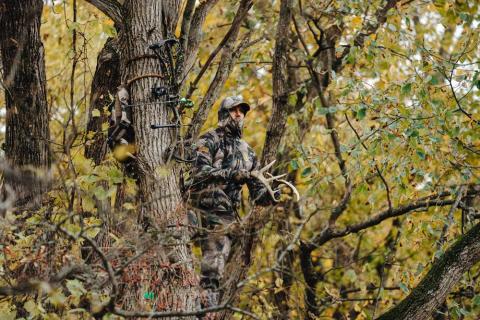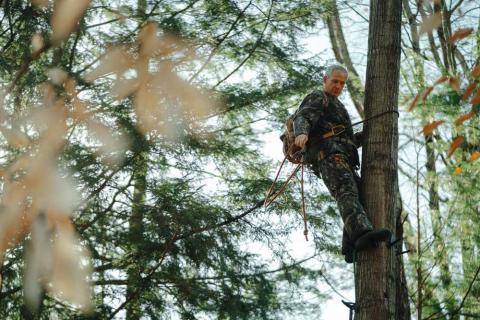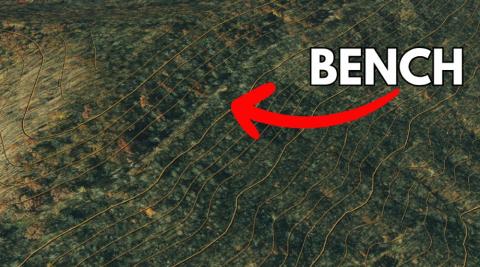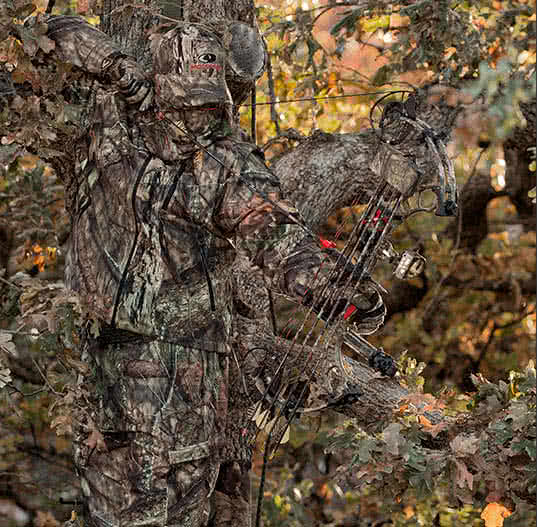Paul Annear
Whitetail food plots get a lot of love in the land management space. Deer hunters everywhere spent countless hours planning their next food plot rotation. Grinding away on a humid summer day just to plant and create a whitetail haven where deer feed and can be hunted is rewarding and fun. But there are more permanent food sources you could be missing out on.

A lot of whitetail management fads come and go. Prescribed burns, native grass plantings, and early successional habitat management are all tops on everybody’s list right now. As they should be. Nearly all North American game species benefits from excellent food and cover 5 feet or lower. So, here is a list of top plantings for deer you should consider.
Priority Habitat First
After you’ve established food plots, improved cover and native habitat on your land through timber management, native grass plantings or burns, and maybe planted a few honey hole food plots, it’s time to think long-term. So here is a quick caveat.
Alan Summerford of the Native Habitat Project told me “Planting trees or shrubs is actually low on my priority list of recommendations, unless someone already has their property managed appropriately and are now in maintenance mode, Adding shrub and tree plantings for deer can be a great addition to the property.”
Planting small to medium shrubs for whitetails can boost cover within just a few years and provide decades of excellent food on your land. Here are some of the top non-food plot plantings for deer you should consider.
Shop Now: 300 lb Capacity Deer Feeder
Fruit Trees
Fruit tree plots or “orchards” can be a great idea when planted in a huntable area. Finding a variety of fruit trees that complement one another and drop at different times throughout the year should keep deer returning. Be sure you read up on whether your fruit tree varieties are self-pollinating or not. Even if fruit trees are self-pollinating, having a few extra trees typically only increases fruit production.
Fruit trees like apple varieties are extremely popular due to attractiveness and their ability to produce an abundance of fruit. Liberty and Honeycrisp varieties sit well with deer and humans alike. Refer to online instructions for pruning, but regular maintenance should be a part of your apple tree maintenance.
Persimmon trees can be an excellent fruit tree choice for hunters aiming to try something unique and probably offer something different than your neighbors. There are a variety of permission trees that will produce tons of soft mast for your herd.
Plum trees not only produce excellent soft fruit for deer and other animals, their ability to grow as wide as they are tall can provide solid cover for deer when planted in a group. Almost all plum varieties prefer upland well-drained soil.
Although not talked about often, some hunters go with trees like mulberries that produce soft fruit more known for human consumption. A tree like Black Mulberry grows well in warmer climates, requires very little maintenance and is still extremely attractive to deer.
Shop Fruit Trees from Mossy Oak Nativ Nurseries
Direct Nut Seeding Acorns
If you have a large open area where you want to establish a permanent planting, direct nut seeding acorns should be a consideration. Direct nut seeding is more cost-effective than planting small oak trees, but will still require preparation future maintenance.
Before ordering seed, you need to research reputable sellers of good acorns. Get some references or ask friends if possible. Once you receive the acorns, you need to store them properly before planting and ideally, plant soon after receiving them.
Direct nut seeding works best when you can overwhelm deer, rabbits and other critters with so many saplings they don’t have a chance to nibble them all. Another benefit of direct nut seeding is that you can grab handfuls and throw them into a prepared seed bed clear of weeds and competition.
If you see deer mauling seedlings, you’ll want to guarantee the survival of some trees by caging them. You’ll want to evaluate the weed competition, but some hunters actually allow some weeds to grow so deer have a more difficult time locating and nipping off young oaks.
Chestnuts
Although the American chestnut tree has a long, storied and sad history in North America due to blight essentially wiping out the American chestnuts ability to grow mature, there are still varieties like the Dunstan chestnut that can be successfully planted for deer. Dustan chestnuts can produce mast within just a few years and can be planted across much of the whitetail’s range to serve the planting needs of hunters. Unlike some oaks, Dustan chestnuts produce a sweet crop of chestnuts every year, with very little tannins that would increase bitterness.
Shop Blight Resistant Chestnuts from Mossy Oak Nativ Nurseries
Plantings for Cover
So far I’ve covered the bases on food producing shrubs or trees, but its time to give consideration to shrubs that can produce cover for whitetails where you need it most. Shrub species like Red Osier dogwoods can be planted in moist and wet areas and serve a few purposes. This dogwood shrub is usually planted to increase cover in marginal deer areas, but whitetails will nibble on them as part of their browse diet. Red Osier dogwood turns a beautiful red hue in winter and creates a nasty, thick section of cover if planted close together.
Planting Hybrid willows can be a great option to increase bedding cover and structure around a food plot. If you have open areas you’d like to screen off, planting willows can be a great way to decrease visibility and create a solid screen for early to mid-season hunting. It’s not a bad idea to pair a willow planting with pines to provide a more permanent year-round cover base.
Conifers
Conifers like red and white pine can be an excellent choice not only for screening, but for winter thermal cover. Choosing a fast growing pine can help wall off a boundary line or create a blockade or pathway for where you want deer to travel.
Although their reputation has taken a big hit in recent years, young cedar trees like red cedar spaced out within a mixture of grassy habitat can provide amazing bedding and deer travel structure to a fallow field. A monoculture of anything isn’t a good thing, and this applies to cedars. However, cedar swamps hold deer for a reason. Many giant whitetail have made a living dipping low into hard to access cedar swamps that also provide a break from deep snow and howling winter winds. While deer typically only eat cedars as an emergency food, whitetails will eat white cedar if other preferred deer forages are lacking.
Wrapping Up
Deer habitat management is an all-encompassing deal. You shouldn’t put all your energy and focus into one aspect of deer management. If you manage your timber, you should manage for early successional habitat, plant food plots, and consider planting small shrubs and trees mentioned in this article. A prime piece of whitetail hunting land is one that meets the year round food needs of deer and provides them with a sense of security.














